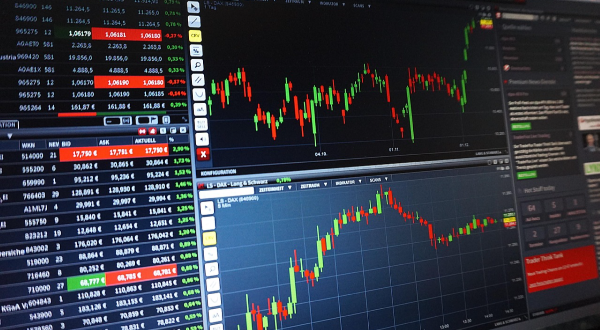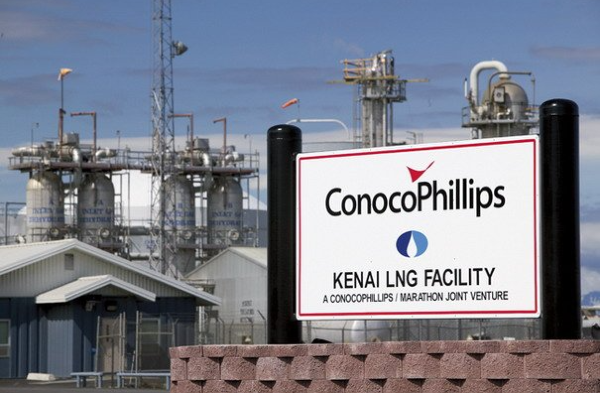Introduction
Dividend stocks are a cornerstone of smart investing, offering reliable income and long-term growth potential. Unlike traditional growth stocks, dividend-paying companies distribute a portion of their profits to shareholders, providing a steady stream of passive income. This strategy is particularly appealing to investors seeking financial stability and wealth accumulation over time. Dividend investing can be a powerful tool for compounding returns—by reinvesting dividends, investors can accelerate portfolio growth while benefiting from market appreciation. However, not all dividend stocks are created equal. To build a strong dividend portfolio, it’s crucial to evaluate factors such as dividend yield, payout ratio, financial health, and industry stability. Companies with a consistent history of dividend payments and solid fundamentals tend to be more resilient in economic downturns, making them ideal for long-term holding. Whether you’re a seasoned investor or just beginning, dividend
What Makes a Great Dividend Stock?
A great dividend stock is one that consistently rewards investors with reliable income and long-term growth potential. Companies with a strong track record of consistent dividend payments and healthy payout ratios demonstrate financial stability and a commitment to shareholder returns. Solid fundamentals—such as steady revenue, manageable debt, and robust earnings—are key indicators of a company’s ability to sustain dividend payouts over time. Investors should also consider dividend yield versus dividend growth; while a high yield may seem attractive, stocks with steady dividend increases often provide greater long-term value. Additionally, industry resilience plays a crucial role—sectors like consumer staples, healthcare, and utilities tend to perform well even in economic downturns, making them reliable choices for dividend investing. By focusing on these factors, investors can build a portfolio of high-quality dividend stocks that generate sustainable income and capital appreciation over time.
Top Dividend Stocks to Consider
1. Blue-Chip Dividend Stocks
Blue-chip dividend stocks are widely regarded as some of the safest and most reliable investments for long-term investors. These stocks belong to well-established companies with strong financials, a history of consistent earnings, and a reputation for weathering economic downturns. Because of their stability, blue-chip stocks often serve as the foundation of dividend portfolios, providing predictable income and steady growth. Investors value these companies for their commitment to returning capital to shareholders through regular dividends, making them ideal for those seeking passive income and financial security. Whether in bull or bear markets, blue-chip stocks tend to perform well, thanks to their diversified business models, global reach, and industry dominance.
Some of the most top-performing blue-chip dividend stocks include industry giants like Johnson & Johnson (JNJ), known for its resilience in the healthcare sector, Procter & Gamble (PG), a leader in consumer staples with a long history of steady dividend payments, and Coca-Cola (KO), which has consistently rewarded shareholders through its reliable dividend policy. Microsoft (MSFT) also stands out as a tech blue-chip that combines both growth and dividend stability. These companies have demonstrated unwavering financial strength and a commitment to rewarding investors, making them key players in any dividend-focused portfolio. By investing in blue-chip dividend stocks, investors can enjoy both income generation and long-term capital appreciation, ensuring a strong foundation for financial growth.
2. High-Yield Dividend Stocks
High-yield dividend stocks can be an attractive option for investors seeking substantial passive income, but they come with both advantages and potential drawbacks. The primary benefit is the ability to generate higher returns through dividends, which can be especially valuable for retirees or income-focused investors. These stocks often belong to sectors such as real estate investment trusts (REITs), utilities, and energy, where companies distribute a significant portion of their earnings to shareholders. However, high-yield stocks can also be riskier; an excessively high dividend yield may signal financial instability or a struggling business model. Companies offering unsustainable yields may eventually cut dividends, leading to losses for investors. Careful evaluation of financial health, payout ratios, and long-term stability is essential before committing to high-yield dividend investments.
Some of the best high-yield dividend stocks to consider include AT&T (T), which has a long-standing reputation for rewarding shareholders, Altria Group (MO), a consumer goods company known for its robust yield, and Realty Income (O), a REIT specializing in steady monthly dividend payouts. Additionally, Enterprise Products Partners (EPD) in the energy sector provides consistent high yields, supported by strong cash flow. While these companies have historically maintained attractive dividends, investors should remain cautious and monitor financial trends to ensure sustained profitability. By strategically selecting high-yield dividend stocks with solid fundamentals, investors can achieve both income generation and long-term portfolio stability.
3. Dividend Aristocrats and Kings
Dividend Aristocrats and Kings represent the elite tier of dividend-paying stocks, offering investors a combination of reliability, financial strength, and consistent income growth. Dividend Aristocrats are companies in the S&P 500 that have increased their dividends for at least 25 consecutive years, demonstrating a strong commitment to rewarding shareholders. Dividend Kings take this distinction even further, having raised their dividends for 50 or more consecutive years, showcasing unparalleled stability and resilience across economic cycles. These stocks often belong to well-established industries such as consumer staples, healthcare, and industrials, making them ideal for long-term investors seeking dependable returns. Their ability to generate steady cash flow and maintain strong financials ensures that investors receive consistent dividends, even during market volatility.
Some of the top Dividend Aristocrats and Kings include Procter & Gamble (PG), a consumer goods powerhouse with a long history of dividend growth, Johnson & Johnson (JNJ), a healthcare giant known for its financial stability, and 3M (MMM), a diversified industrial leader with a track record of consistent payouts. Among Dividend Kings, Coca-Cola (KO) stands out for its resilience in the beverage industry, while Colgate-Palmolive (CL) maintains strong market presence and dividend reliability. Investing in these elite dividend stocks can provide long-term portfolio stability and consistent passive income, making them excellent choices for those focused on financial growth and wealth preservation.
4. REITs (Real Estate Investment Trusts)
Real Estate Investment Trusts (REITs) can be an excellent choice for dividend investors seeking steady income and portfolio diversification. REITs are companies that own, operate, or finance income-generating real estate, and they are required by law to distribute at least 90% of their taxable income to shareholders in the form of dividends. This makes them particularly attractive for those who want consistent cash flow without directly managing properties. In addition, REITs provide access to real estate assets that investors might not otherwise afford or manage, such as commercial properties, healthcare facilities, and industrial warehouses. Their ability to generate rental income across various sectors ensures a stable revenue stream, making them a compelling option for long-term income-focused investors.
REITs come in different types, each with varying levels of risk and reward. Equity REITs, which own and manage physical properties, are typically less risky and provide steady income from rentals. Mortgage REITs (mREITs), on the other hand, invest in real estate debt and loans, offering higher yields but carrying more risk due to interest rate fluctuations. Hybrid REITs combine both strategies, balancing income from property ownership and real estate financing. Some top-performing REITs with strong dividend records include Realty Income (O), known for its monthly dividend payouts, Public Storage (PSA), a leader in self-storage properties, and W.P. Carey (WPC)
Strategies for Buying and Holding Dividend Stocks
A successful dividend investing strategy revolves around careful selection and long-term portfolio management. Diversification is crucial in reducing risk, as spreading investments across multiple industries and sectors minimizes the impact of downturns in any single market. By holding a mix of dividend stocks, including blue-chip companies, high-yield stocks, and REITs, investors can create a balanced portfolio that generates steady income while mitigating volatility. Diversification also ensures exposure to different economic cycles, making it easier to sustain consistent returns even during challenging market conditions.
Another powerful strategy is reinvesting dividends, which enables the compounding effect to maximize portfolio growth. Instead of cashing out dividend payments, reinvesting them back into the portfolio allows investors to purchase more shares, boosting future dividend payouts and overall returns. This approach accelerates wealth accumulation, particularly in tax-advantaged accounts like IRAs. Investors should also monitor stock performance and adjust holdings accordingly. Keeping an eye on company fundamentals, dividend payout trends, and industry shifts ensures that investments remain viable in the long run. By periodically reviewing and rebalancing portfolios, investors can optimize their dividend strategy to maintain profitability and financial security.
Potential Risks and Considerations
While dividend investing is a reliable strategy for generating passive income, it comes with risks that investors should carefully consider. Market volatility and economic downturns can impact dividend stocks, especially in cyclical industries like finance and energy. In times of economic uncertainty, stock prices may decline, affecting total portfolio value and investor confidence. Defensive sectors, such as consumer staples and healthcare, often perform better during market instability, making them safer options for dividend investors seeking stability.
Another critical factor is the possibility of dividend cuts and company performance declines. Companies facing financial hardship or declining profits may reduce or eliminate dividend payouts, negatively impacting income-focused investors. Monitoring a company’s payout ratio, cash flow, and earnings stability can help investors avoid stocks at risk of dividend reductions. Additionally, inflation and interest rates play a role in dividend investing. Rising inflation can erode the purchasing power of dividends, while higher interest rates may make fixed-income investments more attractive than dividend stocks. Staying informed about macroeconomic trends and adjusting portfolio allocations accordingly can help investors maintain a strong and resilient dividend strategy over time.
Conclusion
Investing in dividend stocks is a powerful strategy for building long-term wealth and financial stability. By selecting high-quality dividend stocks—whether blue-chip leaders, high-yield opportunities, Dividend Aristocrats, or reliable REITs—investors can create a diversified portfolio that generates consistent passive income. A well-balanced approach that includes reinvesting dividends, monitoring stock performance, and adapting to market conditions ensures sustained growth over time. Despite potential risks such as market volatility, dividend cuts, and inflation, careful research and strategic planning can help investors mitigate uncertainty and maximize returns.
Ultimately, dividend investing provides a pathway to financial security, offering steady income while allowing capital appreciation. Whether you are a seasoned investor or just starting, focusing on strong fundamentals, industry resilience, and proven track records can lead to a rewarding investment experience. By following sound dividend investing principles, investors can build a sustainable portfolio that thrives in both stable and uncertain market conditions, creating a reliable foundation for long-term financial success.






























Introduction
Dividend stocks are a cornerstone of smart investing, offering reliable income and long-term growth potential. Unlike traditional growth stocks, dividend-paying companies distribute a portion of their profits to shareholders, providing a steady stream of passive income. This strategy is particularly appealing to investors seeking financial stability and wealth accumulation over time. Dividend investing can be a powerful tool for compounding returns—by reinvesting dividends, investors can accelerate portfolio growth while benefiting from market appreciation. However, not all dividend stocks are created equal. To build a strong dividend portfolio, it’s crucial to evaluate factors such as dividend yield, payout ratio, financial health, and industry stability. Companies with a consistent history of dividend payments and solid fundamentals tend to be more resilient in economic downturns, making them ideal for long-term holding. Whether you’re a seasoned investor or just beginning, dividend
What Makes a Great Dividend Stock?
A great dividend stock is one that consistently rewards investors with reliable income and long-term growth potential. Companies with a strong track record of consistent dividend payments and healthy payout ratios demonstrate financial stability and a commitment to shareholder returns. Solid fundamentals—such as steady revenue, manageable debt, and robust earnings—are key indicators of a company’s ability to sustain dividend payouts over time. Investors should also consider dividend yield versus dividend growth; while a high yield may seem attractive, stocks with steady dividend increases often provide greater long-term value. Additionally, industry resilience plays a crucial role—sectors like consumer staples, healthcare, and utilities tend to perform well even in economic downturns, making them reliable choices for dividend investing. By focusing on these factors, investors can build a portfolio of high-quality dividend stocks that generate sustainable income and capital appreciation over time.
Top Dividend Stocks to Consider
1. Blue-Chip Dividend Stocks
Blue-chip dividend stocks are widely regarded as some of the safest and most reliable investments for long-term investors. These stocks belong to well-established companies with strong financials, a history of consistent earnings, and a reputation for weathering economic downturns. Because of their stability, blue-chip stocks often serve as the foundation of dividend portfolios, providing predictable income and steady growth. Investors value these companies for their commitment to returning capital to shareholders through regular dividends, making them ideal for those seeking passive income and financial security. Whether in bull or bear markets, blue-chip stocks tend to perform well, thanks to their diversified business models, global reach, and industry dominance.
Some of the most top-performing blue-chip dividend stocks include industry giants like Johnson & Johnson (JNJ), known for its resilience in the healthcare sector, Procter & Gamble (PG), a leader in consumer staples with a long history of steady dividend payments, and Coca-Cola (KO), which has consistently rewarded shareholders through its reliable dividend policy. Microsoft (MSFT) also stands out as a tech blue-chip that combines both growth and dividend stability. These companies have demonstrated unwavering financial strength and a commitment to rewarding investors, making them key players in any dividend-focused portfolio. By investing in blue-chip dividend stocks, investors can enjoy both income generation and long-term capital appreciation, ensuring a strong foundation for financial growth.
2. High-Yield Dividend Stocks
High-yield dividend stocks can be an attractive option for investors seeking substantial passive income, but they come with both advantages and potential drawbacks. The primary benefit is the ability to generate higher returns through dividends, which can be especially valuable for retirees or income-focused investors. These stocks often belong to sectors such as real estate investment trusts (REITs), utilities, and energy, where companies distribute a significant portion of their earnings to shareholders. However, high-yield stocks can also be riskier; an excessively high dividend yield may signal financial instability or a struggling business model. Companies offering unsustainable yields may eventually cut dividends, leading to losses for investors. Careful evaluation of financial health, payout ratios, and long-term stability is essential before committing to high-yield dividend investments.
Some of the best high-yield dividend stocks to consider include AT&T (T), which has a long-standing reputation for rewarding shareholders, Altria Group (MO), a consumer goods company known for its robust yield, and Realty Income (O), a REIT specializing in steady monthly dividend payouts. Additionally, Enterprise Products Partners (EPD) in the energy sector provides consistent high yields, supported by strong cash flow. While these companies have historically maintained attractive dividends, investors should remain cautious and monitor financial trends to ensure sustained profitability. By strategically selecting high-yield dividend stocks with solid fundamentals, investors can achieve both income generation and long-term portfolio stability.
3. Dividend Aristocrats and Kings
Dividend Aristocrats and Kings represent the elite tier of dividend-paying stocks, offering investors a combination of reliability, financial strength, and consistent income growth. Dividend Aristocrats are companies in the S&P 500 that have increased their dividends for at least 25 consecutive years, demonstrating a strong commitment to rewarding shareholders. Dividend Kings take this distinction even further, having raised their dividends for 50 or more consecutive years, showcasing unparalleled stability and resilience across economic cycles. These stocks often belong to well-established industries such as consumer staples, healthcare, and industrials, making them ideal for long-term investors seeking dependable returns. Their ability to generate steady cash flow and maintain strong financials ensures that investors receive consistent dividends, even during market volatility.
Some of the top Dividend Aristocrats and Kings include Procter & Gamble (PG), a consumer goods powerhouse with a long history of dividend growth, Johnson & Johnson (JNJ), a healthcare giant known for its financial stability, and 3M (MMM), a diversified industrial leader with a track record of consistent payouts. Among Dividend Kings, Coca-Cola (KO) stands out for its resilience in the beverage industry, while Colgate-Palmolive (CL) maintains strong market presence and dividend reliability. Investing in these elite dividend stocks can provide long-term portfolio stability and consistent passive income, making them excellent choices for those focused on financial growth and wealth preservation.
4. REITs (Real Estate Investment Trusts)
Real Estate Investment Trusts (REITs) can be an excellent choice for dividend investors seeking steady income and portfolio diversification. REITs are companies that own, operate, or finance income-generating real estate, and they are required by law to distribute at least 90% of their taxable income to shareholders in the form of dividends. This makes them particularly attractive for those who want consistent cash flow without directly managing properties. In addition, REITs provide access to real estate assets that investors might not otherwise afford or manage, such as commercial properties, healthcare facilities, and industrial warehouses. Their ability to generate rental income across various sectors ensures a stable revenue stream, making them a compelling option for long-term income-focused investors.
REITs come in different types, each with varying levels of risk and reward. Equity REITs, which own and manage physical properties, are typically less risky and provide steady income from rentals. Mortgage REITs (mREITs), on the other hand, invest in real estate debt and loans, offering higher yields but carrying more risk due to interest rate fluctuations. Hybrid REITs combine both strategies, balancing income from property ownership and real estate financing. Some top-performing REITs with strong dividend records include Realty Income (O), known for its monthly dividend payouts, Public Storage (PSA), a leader in self-storage properties, and W.P. Carey (WPC)
Strategies for Buying and Holding Dividend Stocks
A successful dividend investing strategy revolves around careful selection and long-term portfolio management. Diversification is crucial in reducing risk, as spreading investments across multiple industries and sectors minimizes the impact of downturns in any single market. By holding a mix of dividend stocks, including blue-chip companies, high-yield stocks, and REITs, investors can create a balanced portfolio that generates steady income while mitigating volatility. Diversification also ensures exposure to different economic cycles, making it easier to sustain consistent returns even during challenging market conditions.
Another powerful strategy is reinvesting dividends, which enables the compounding effect to maximize portfolio growth. Instead of cashing out dividend payments, reinvesting them back into the portfolio allows investors to purchase more shares, boosting future dividend payouts and overall returns. This approach accelerates wealth accumulation, particularly in tax-advantaged accounts like IRAs. Investors should also monitor stock performance and adjust holdings accordingly. Keeping an eye on company fundamentals, dividend payout trends, and industry shifts ensures that investments remain viable in the long run. By periodically reviewing and rebalancing portfolios, investors can optimize their dividend strategy to maintain profitability and financial security.
Potential Risks and Considerations
While dividend investing is a reliable strategy for generating passive income, it comes with risks that investors should carefully consider. Market volatility and economic downturns can impact dividend stocks, especially in cyclical industries like finance and energy. In times of economic uncertainty, stock prices may decline, affecting total portfolio value and investor confidence. Defensive sectors, such as consumer staples and healthcare, often perform better during market instability, making them safer options for dividend investors seeking stability.
Another critical factor is the possibility of dividend cuts and company performance declines. Companies facing financial hardship or declining profits may reduce or eliminate dividend payouts, negatively impacting income-focused investors. Monitoring a company’s payout ratio, cash flow, and earnings stability can help investors avoid stocks at risk of dividend reductions. Additionally, inflation and interest rates play a role in dividend investing. Rising inflation can erode the purchasing power of dividends, while higher interest rates may make fixed-income investments more attractive than dividend stocks. Staying informed about macroeconomic trends and adjusting portfolio allocations accordingly can help investors maintain a strong and resilient dividend strategy over time.
Conclusion
Investing in dividend stocks is a powerful strategy for building long-term wealth and financial stability. By selecting high-quality dividend stocks—whether blue-chip leaders, high-yield opportunities, Dividend Aristocrats, or reliable REITs—investors can create a diversified portfolio that generates consistent passive income. A well-balanced approach that includes reinvesting dividends, monitoring stock performance, and adapting to market conditions ensures sustained growth over time. Despite potential risks such as market volatility, dividend cuts, and inflation, careful research and strategic planning can help investors mitigate uncertainty and maximize returns.
Ultimately, dividend investing provides a pathway to financial security, offering steady income while allowing capital appreciation. Whether you are a seasoned investor or just starting, focusing on strong fundamentals, industry resilience, and proven track records can lead to a rewarding investment experience. By following sound dividend investing principles, investors can build a sustainable portfolio that thrives in both stable and uncertain market conditions, creating a reliable foundation for long-term financial success.